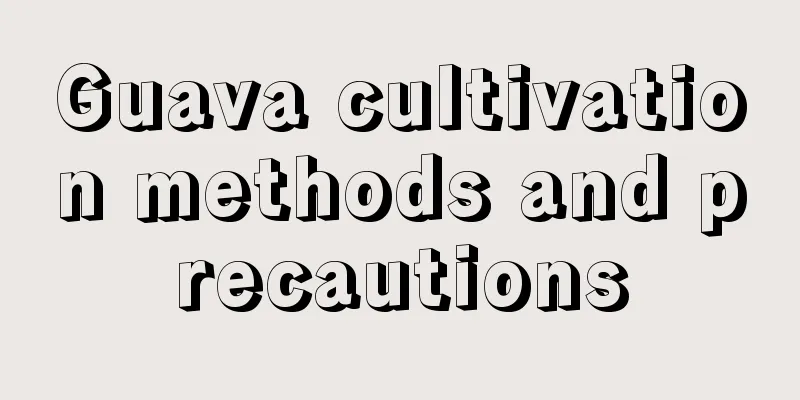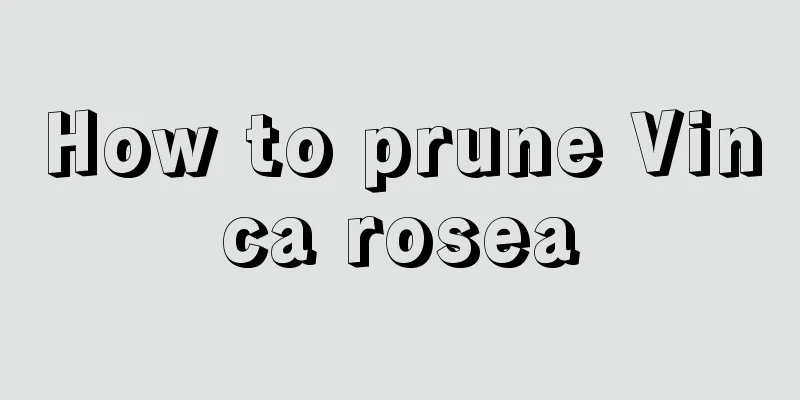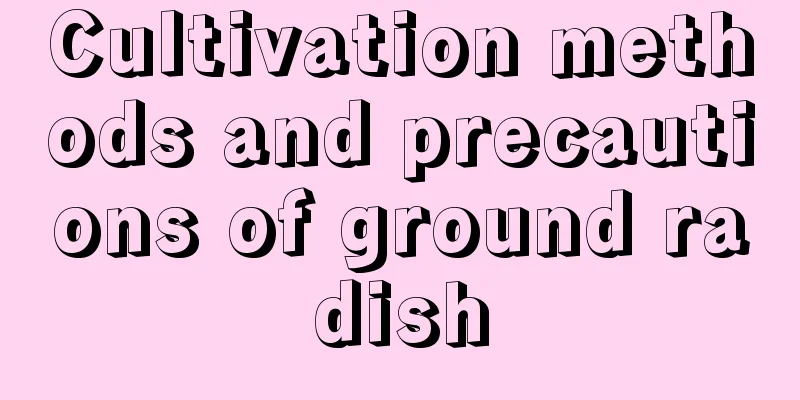Guava cultivation methods and precautions

1. Maintenance methods1. Temperature: If the temperature is below zero degrees, the plants will be frozen to death. Therefore, the maintenance temperature should be higher. The lowest maintenance temperature is 15 degrees. It will only grow when the temperature reaches 15 degrees. The best maintenance temperature is between 20 and 28 degrees. The plant grows best at this temperature. 2. Watering: If it is not a dry season, there is no need to water it. If the drought lasts for more than two months, it needs to be artificially irrigated, otherwise it will affect the yield. When watering, observe the state of the soil first. Watering is only needed when the soil is completely dry. Normally, it needs to be watered once a week. 3. Fertilization: Fertilize it according to the method of applying thin fertilizers frequently. It is not suitable to apply concentrated fertilizers, as concentrated fertilizers can easily burn the roots. You can use compound fertilizers or human feces and urine for fertilization, and the frequency of fertilization can be maintained at once a month. 4. Light: Its growth cannot be separated from light. Adequate light is of great benefit to its growth, which can promote growth and increase yield. If full-day sunlight is not possible, the daily light must be guaranteed to be at least five hours. 2. Breeding techniques1. Reproduction: It can be propagated by grafting. The breeding time is in winter and spring. When the seedlings grow to a diameter of 0.7 cm, they can be grafted. In the first half month of collecting the scion, pick the leaves and cut them off when the buds are about to sprout. The effect is best at this time. The thicker the rootstock is, the more nutrients it has accumulated, which is conducive to success. Generally, the binding is untied one month after the bud grafting. After the grafted bud heals and survives, the rootstock is cut off, and it can be transplanted and planted one year later. 2. Pruning: Pruning is required after the fruit is harvested. First, cut off the branches that grow too lushly; second, cut off the branches that are more than two centimeters long; finally, cut the general branches shorter. 3. Problem Diagnosis1. Pests: Aphids are its number one natural enemy. If found, they need to be treated with cypermethrin. 2. Diseases: The plants are more susceptible to canker and damping-off. If found, Bordeaux slurry can be used for spraying treatment. IV. Other issues1. Edibility: It is edible. 2. Other values: In addition to being edible, it can also be used as medicine and has the function of stopping bleeding. |
<<: Artemisia cultivation methods and precautions
>>: The cultivation methods and precautions of Smilax china
Recommend
Specific medicine for preventing and controlling goosegrass (what herbicide can kill goosegrass in rice fields)
As more and more types of pesticides are availabl...
What fertilizers are needed for strawberries to be sweet (what fertilizers are suitable for strawberries to grow strong)
Strawberry is one of the popular fruits that is d...
What to do if rose leaves wilt
1. Method 1. If it is a newly purchased seedling,...
How to propagate Chlorophytum comosum by cuttings
1. Preparation of cuttings Cut branches of about ...
Is Ficus ginseng suitable for the bedroom?
Can it be kept in the living room? When it comes ...
Custard Apple Pruning Techniques in June and July
Sugar apple , also known as custard apple , is a ...
What to do if geranium only grows leaves but does not bloom
1. Increase lighting Reason: Geraniums need suffi...
Art reveals the pros and cons of roses
The Art Leaked Rose comes from Japan and is not v...
Can chayote be grown in pots?
Can Chayote be grown in pots? Chayote can be grow...
Can I grow osmanthus at home?
1. Is it possible? Many people say that you canno...
The flower language and symbolic meaning of the sleeping lotus
The Flower Language of the Sleeping Fire Lotus Wh...
How to grow bamboo begonia and precautions How to grow bamboo begonia
Bamboo Begonia is easy to grow. It is strong and ...
Do small roses prefer shade or sun?
Do small roses prefer shade or sun? Small roses a...
Will lilies die after a few years of growth? Will lilies die after they wither?
1. It will die after a few years of keeping Lily ...
When is the best time to repot passion fruit? What should you pay attention to when repotting?
1. Time to change the pot When repotting passion ...









